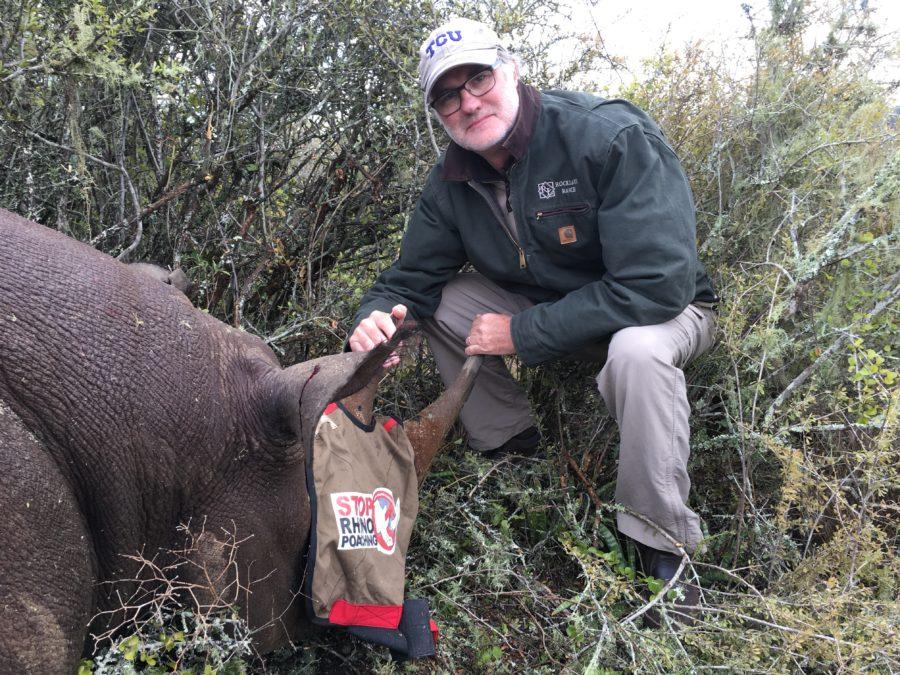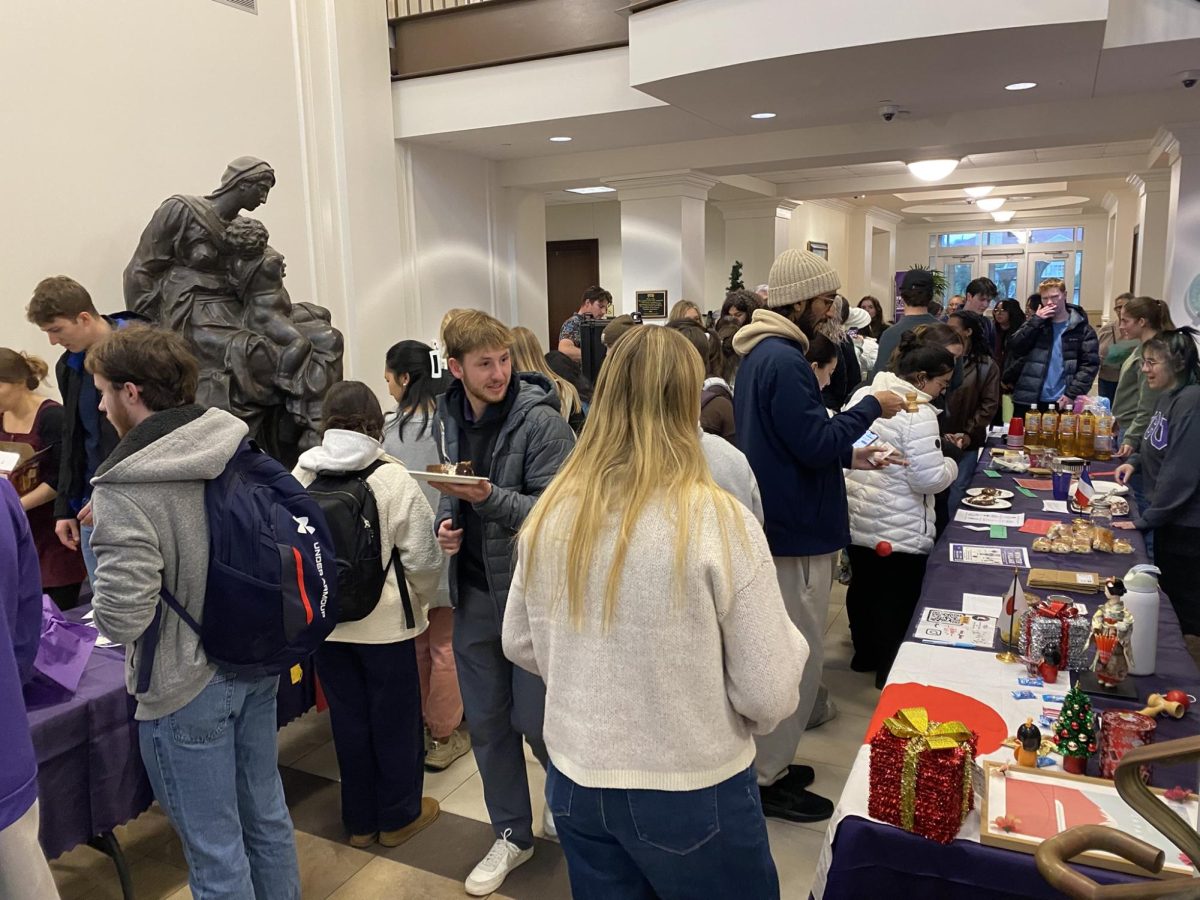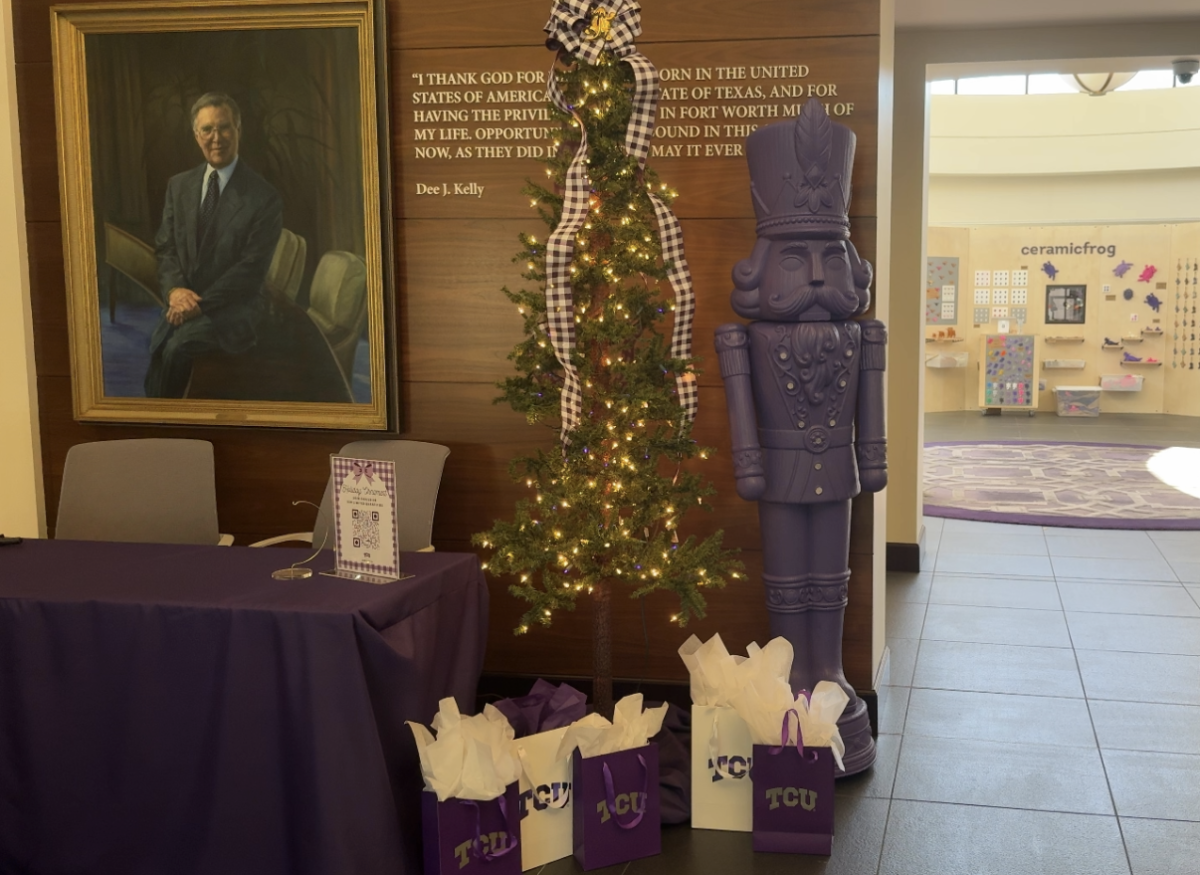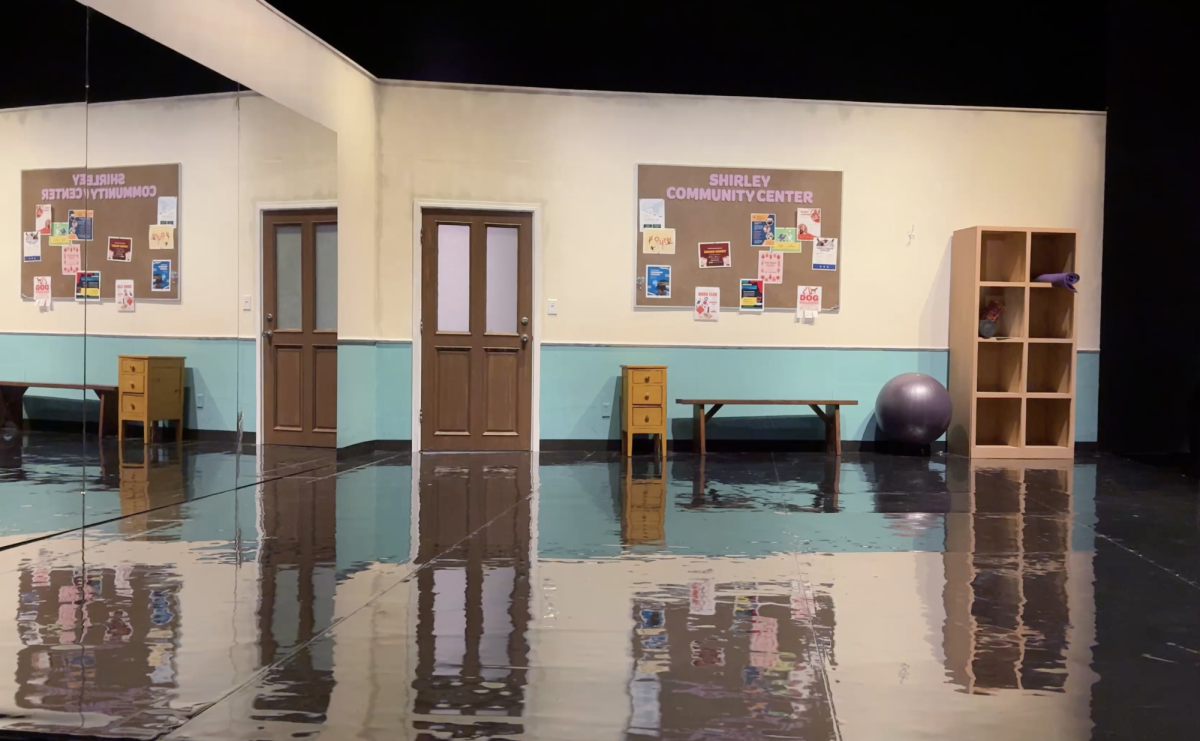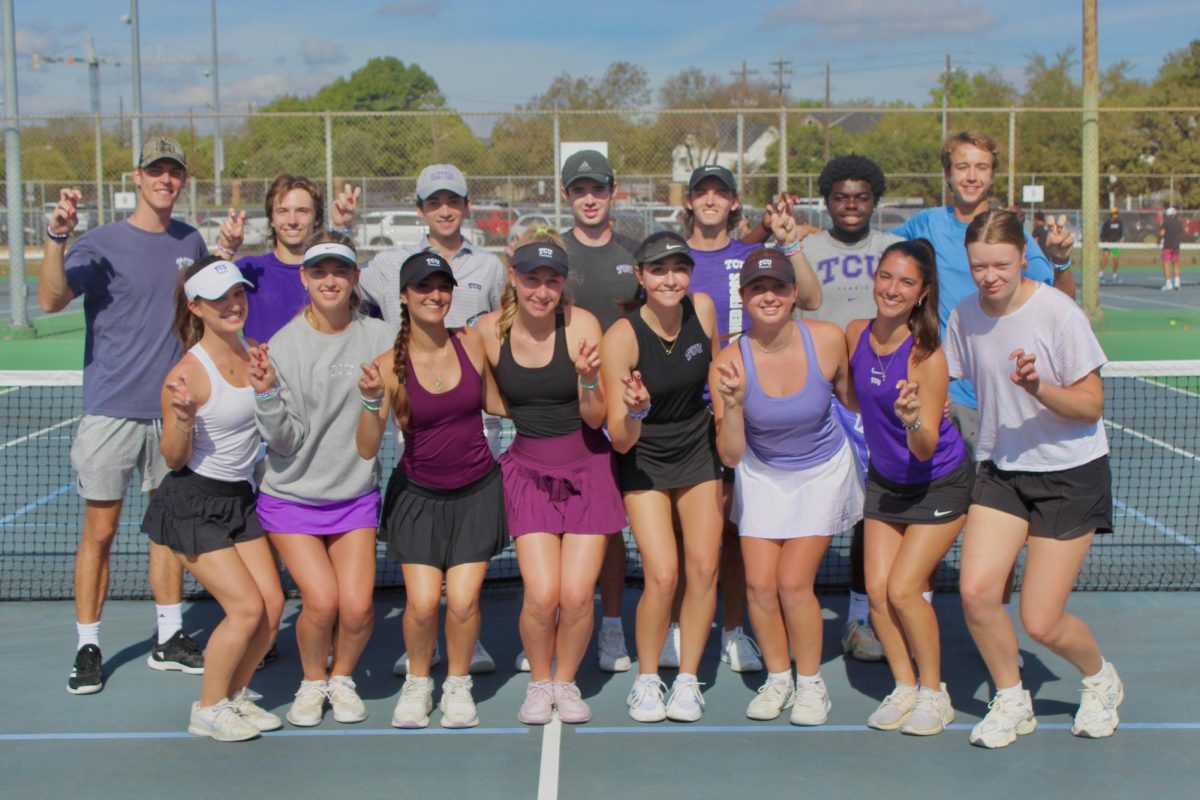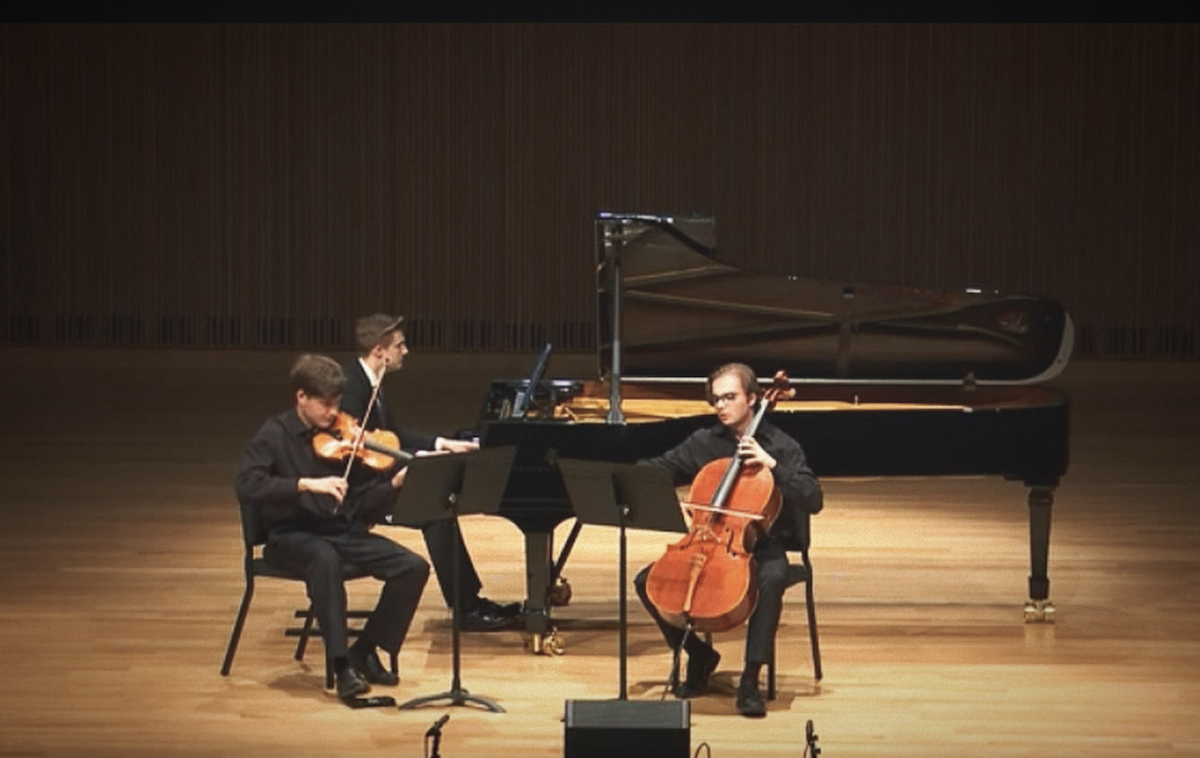There are people who talk about protecting and sustaining a healthy environment, and then there are people like Dr. Mike Slattery — individuals who devote their life to improving the environment. One important aspect of Slattery’s work has been the sustainability of a certain species. Slattery, who is the Director of the Institute for Environmental Studies at TCU and a professor in the School of Geology, Energy and the Environment, launched an initiative in April of 2014 that would help change the lives of one specific animal: the rhinoceros. The TCU Rhino Initiative grew out of a grant TCU gave to Slattery in order to have South African wildlife veterinarian Dr. William Fowlds speak at TCU. The initiative became what it is today due to the work of these two men and eventually many others. The initiative, which was launched to aid in saving the rhino and ensuring its long-term survival, is just one of the many started to help save rhinos. Rhinos are poached at a rate of 3 a day and have gone from a population of 500,000 in the 20th century to a bleak 29,000 today, according to the TCU Rhino Initiative website. The decline in the rhino population can be attributed largely to illegal poaching in South Africa and the illegal trade of the rhino horn in Vietnam, Slattery said. Slattery decided to use his position at TCU to get involved with the issue. In the fall of 2013, Slattery was given the opportunity to submit a proposal, which would bring Dr. Fowlds to TCU through the Discovering Global Citizenship’s Global Innovators program. This program is designed to allow faculty to bring people doing groundbreaking work in their field to TCU’s campus. The focus of that year happened to be South Africa. Slattery, a South African native, immediately jumped on the opportunity to submit a proposal for the $25,000 grant. “I wanted someone that wouldn’t just give a great lecture and disappear, but someone who would tell the students, faculty and staff how we could support their work on the ground and in their particular home country,” Slattery said. Upon receiving the grant, Slattery contacted Dr. Fowlds asking if he would be interested in speaking at TCU. “I wanted to find a way to give back to South Africa, but also get students into the field,” Slattery said. “So I contacted Dr. Fowlds and it took him all of about five seconds to decide he’d like to speak at TCU.” Rhino poaching, which has always been an issue, has recently started to escalate in the past decade. The rate of poaching has exceeded the rate of natural reproduction, which has contributed to the declining population of rhinos, Slattery said. “We’re losing an iconic species,” Slattery said. “We must ask ourselves, how do we protect the species?” Slattery said wrapping protection around the rhinos is first priority. This includes anti-poaching units, dog patrols, 24/7 human protection, dehorning the animals and building game reserves. “There’s a lot of people around the world that are scrambling to try and figure out how to protect the species,” Slattery said. “They’re figuring out how to stop the poaching, how to reduce the demand and how to move this needle back towards a much more sustainable growth population of the species.” In the summer of 2015, TCU students were given the opportunity to go to South Africa as part of the South African Biodiversity and Human Development program. As a part of this study abroad program, students get to experience first-hand wildlife conservation in the Amakhala Game Reserve and are introduced to personal experience with rhino management. This includes rhino dehorning, relocation and anti-poaching, as well as learning how they can be a part of the global effort to stop the rhino-poaching crisis. [envira-gallery id=”1177340″] The abroad program, led by Slattery, has been one of the leading aspects of the initiative. Reflecting on the 2016 abroad trip, Slattery said the whole process of dehorning the rhinos was emotionally intense. Dehorning is one of the strategies many people use that aids in discouraging poachers. Dehorning entails taking a rhino’s horn in a humane way so that a poacher may be less likely to slaughter the animal, because there is no horn to take, Slattery said. “It’s a difficult, expensive and somewhat controversial process, “ Slattery said. During the trip the students were given the opportunity to help with the dehorning of five rhinos. “Although the vet is the only one that can cut the rhino horn, the students play a crucial and big role,” Slattery said. “They are there to administer antibiotics and injections. Take the rhinos temperature, keep track of its vital signs, and keep it hydrated, wetted and cool.” The abroad program, which Slattery hopes will continue every year, has increasingly gained popularity and seen significant increases in applications. Brandon Parrish, a senior environmental science major, got the opportunity to go on the 2016 abroad trip. “The whole trip changed my life,” Parrish said. “This issue is something that is bigger than ourselves and it was such a humbling eye-opening experience.” Along with the abroad program, students can do numerous things campus-wide and as individuals to get involved with the initiative. Students can help with the annual TCU Rhino Run, join the Vietnamese Student Association that educates others on the illegal trade of the rhino horn in Vietnam, and spread awareness through education and learning about our natural heritage. “If we are a university that is committed to the mission statement of ethical and responsible leadership in the global community, and if we are committed to the tagline that TCU is a university that’s focused on learning to change the world, then we have to think outside of our protected environment,” Slattery said. “We are very much at an amazing place but we have to look outside our campus and if we are truly serious about having students graduate that have a global perspective then we must get involved in issues such as this.” Slattery’s future plans for the initiative include taking a group of university administrators and passionate individuals in the community to South Africa in June. This would hopefully generate awareness and funding for his ultimate plan, which is to try and build a rhino protection facility in the current game reserve they visit. The facility would act as a coordination center for things like protection, surgery, rehabilitation and a place where students could go and do research. Slattery says the rhino issue isn’t improving yet, but there has been a slight leveling. He believes coordination among groups is improving and he hopes that TCU can be at least one tiny cog in the global response. “We really want to put a TCU stake in the ground in South Africa,” Slattery said.
Information from tcurhinoinitiative.com

